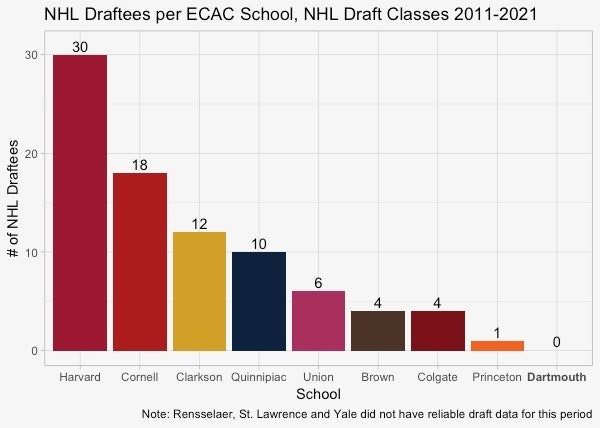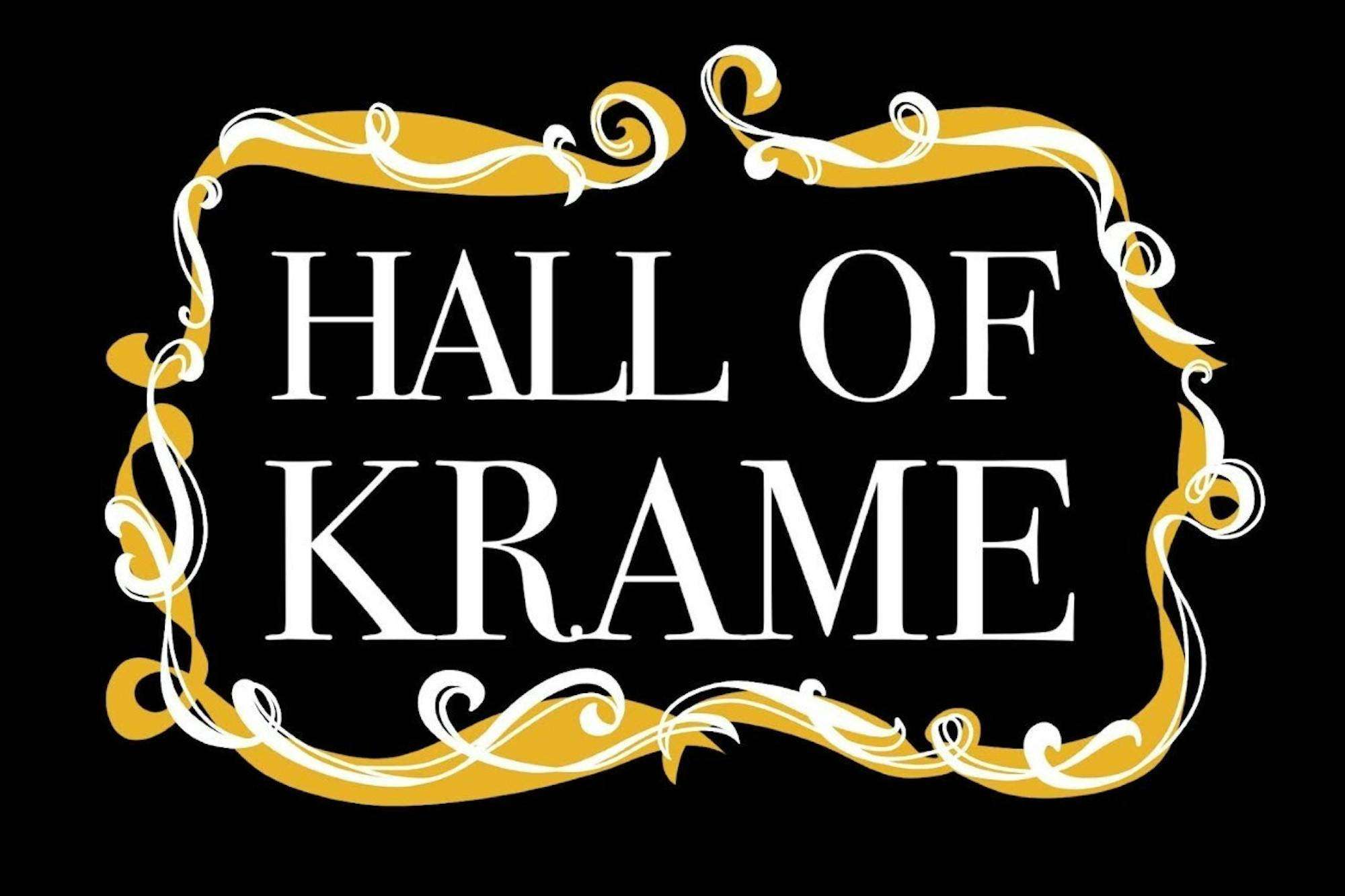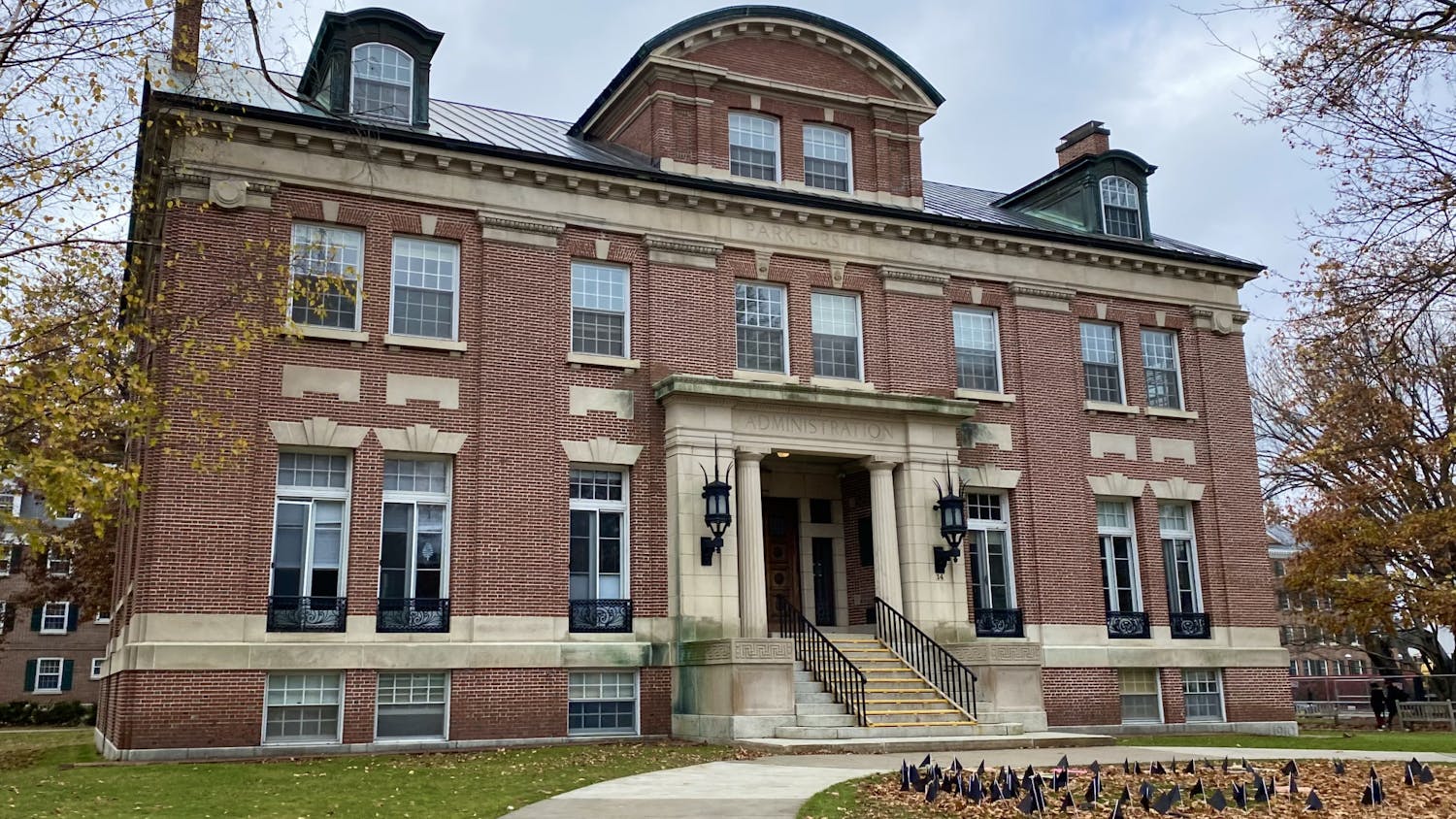Last Friday, Dartmouth men’s hockey lost its opening game to Harvard University by a margin of 9-3. But before the Big Green and the Crimson faced off, Dartmouth faced an even bigger deficit: zero NHL draftees compared to Harvard’s 11.
The gap in experience and professional talent was evident from the get-go, as freshman forward Matthew Coronato, the No. 13 overall draft pick in the 2021 NHL Draft, scored a shorthanded goal just 1:10 into the game and junior forward Nick Abruzzese, a 2019 fourth round pick, slapped in a goal just three minutes later to put Harvard up 2-0 within five minutes. Dartmouth faced a similar challenge against the University of Connecticut the following night, falling 4-1 to a UConn squad with seven NHL draftees.
Unlike in other professional sports leagues such as MLB, the NBA or the NFL, NHL teams retain their signing rights for draftees even when they elect to play college hockey. Thus, many NHL draftees opt to remain amateurs and play NCAA hockey. Professional teams maintain the right to sign them for 30 days after they leave their NCAA institutions. The percentage of NHL players with NCAA experience has grown in the past two decades from 21% in 2003 to 33% in 2019.
Despite the influx of NHL draftees into the NCAA, no Dartmouth player has been drafted since 2009, when Dustin Walsh ’13 was taken in the sixth round by the Montreal Canadiens. Every other ECAC hockey team (except potentially St. Lawrence University, as the data for the Saints is incomplete) has had at least one player get drafted since 2014.
Dartmouth is one of five ECAC teams this year without an NHL draftee. Colgate University, which Dartmouth hosts this evening, has two NHL draftees on its team, and Cornell University, the Big Green’s opponent tomorrow night, has four.
That’s not to say that Dartmouth hasn’t had any success developing professional talent. Drew O’Connor ’22 went undrafted before joining the Big Green but rode his 2019-20 Ivy League Co-Player of the Year award to a two-year professional contract with the Pittsburgh Penguins, making his NHL debut last January. Other recent graduates have also signed professionally, including Will Graber ’20 with the American Hockey League’s Hershey Bears and Adrian Clark ’20, Quin Foreman ’21 and Cam Strong ’20 with ECHL clubs.
Still, it’s surprising how few NHL draftees Dartmouth men’s hockey has rostered compared to its ECAC rivals. Over the past decade, Harvard has rostered 30 players drafted in the 2011 class or later. Cornell University, Clarkson University and Quinnipiac University also rostered at least 10 NHL draftees since that draft class. Below is a chart showing which ECAC schools have had the most players on their teams drafted to the NHL between 2011 and 2021. Rensselaer Polytechnic Institute, St. Lawrence and Yale University are excluded because they did not publicize a complete list of NHL draftees during this period.

Unsurprisingly, there seems to be a high correlation between the number of NHL draftees on a team and the school’s performance on the ice. Harvard, Cornell or Quinnipiac — which rank first, second and fourth in this metric since the 2011 draft class — have collectively won eight of the past nine regular season ECAC titles.
Although Dartmouth has had some success over the past decade — topping out at a tie for fourth place in 2014-15 — the team was much more successful in the decade prior, finishing tied for third or better five times between 2001-02 and 2010-11.
One of the main components of the Big Green’s success during that time frame was its frontline professional talent. Before this recent stretch without an NHL draftee, Dartmouth rostered 12 players who were drafted between 2000 and 2010, the fourth most among ECAC clubs with available data. Only Harvard, Cornell and Clarkson had more players who had been drafted during that span.

Rostering NHL draftees such as Lee Stempniak ’05 and Nick Johnson ’08 not only increased Dartmouth’s title chances during the 2000s, but also improved their odds of landing future NHL draftees. Success breeds more success — that’s how at least one member from all but one NHL draft class since 1995 has played for the Harvard Crimson.
This pattern should provide some hope for new Big Green head coach Reid Cashman as he tries to build up his recruiting infrastructure. Without any NHL draftees on the team from 1996-99, Dartmouth sputtered to three consecutive 11th-place finishes. But once the Big Green picked up a few NHL prospects and had a couple of top-three finishes, the team had a long run of success and won a share of the ECAC regular-season championship, recruiting more NHL draftees along the way.
If Cashman can recruit a few topline NHL draftees similar to other ECAC schools, Dartmouth could break out of the middle of the pack and get back toward the top of the conference. This could enable the team to recruit even more premier talent in the future and create a positive feedback loop for Big Green hockey success.




